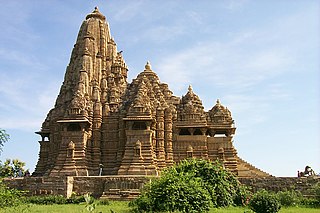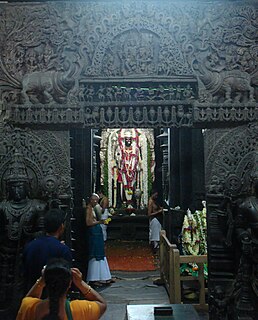
Puja or pooja is a prayer ritual performed by Hindus of devotional worship to one or more deities, or to host and honor a guest, or one to spiritually celebrate an event. It may honour or celebrate the presence of special guest(s), or their memories after they die. The word "pūjā" is Sanskrit, and means reverence, honour, homage, adoration, and worship. Puja, the loving offering of light, flowers, and water or food to the divine, is the essential ritual of Hinduism. For the worshipper, the divine is visible in the image, and the divinity sees the worshipper. The interaction between human and deity, between human and guru, is called darshan, seeing..

Maha Shivaratri is a Hindu festival celebrated annually in honor of Lord Shiva, and in particular, marks the day of the marriage of Shiva. There is a Shivaratri in every luni-solar month of the Hindu calendar, on the month's 13th night/14th day, but once a year in late winter and before the arrival of Summer, marks Maha Shivaratri which means "the Great Night of Shiva".
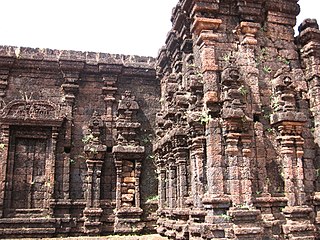
The Rajarajeswara temple is a Shiva temple located at Taliparamba in the Kannur district of Kerala, South India. The temple is regarded as one of the existing 108 ancient Shiva Temples of ancient Kerala. It also has a prominent place amongst the numerous Shiva temples in South India. It had the tallest shikhara amongst the temples of its time. The Rajarajeshwara temple has a top of about 90 tonnes. If any problem is encountered in the other temples of South India, devotees seek a solution in this temple through a prasna, a traditional method of astrological decision making. The prasna is conducted on a peedha outside the temple.

Built in 1833, the Arulmigu Sri Mahamariamman Temple in George Town is the oldest Hindu temple in Penang, Malaysia, and features sculptures of gods and goddesses over its main entrance and facade. It is located at Queen Street, George Town.
Chakkulathu Kavu is a Hindu temple, dedicated to goddess Durga. The temple is located in Neerattupuram, Thalavady panchayat, Alappuzha District, Kerala and is one of the most popular temples in the state.

Suryanar Kovil is a Hindu temple dedicated to the deity Hindu Sun-God, located in Suryanar Kovil, a village near the South Indian town of Kumbakonam in Tamil Nadu, India. The presiding deity is Suriyanar, the Sun and his consorts Ushadevi and Pratyusha Devi. The temple also has separate shrines for the other eight planetary deities. The temple is considered one of the nine Navagraha temples in Tamil Nadu. The temple is one of the few historic temples dedicated to Sun god and is also the only temple in Tamil Nadu which has shrines for all the planetary deities.
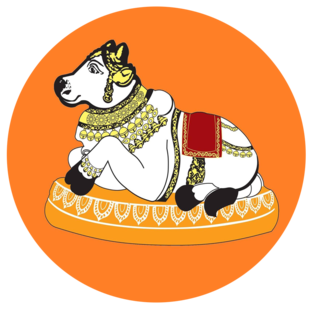
The Paadal Petra Thalam are 275 temples that are revered in the verses of Saiva Nayanars in the 6th-9th century CE and are amongst the greatest Shiva temples of the continent. The Divya Desams by comparison are the 108 Vishnu temples glorified in the poems of the contemporary Vaishnava Alvars of Tamil Nadu, India

Swetharanyeswarar Temple is a Hindu temple dedicated to the deity Shiva, located in Thiruvenkadu, a village in Nagapattinam district in the South Indian state of Tamil Nadu. Shiva is worshiped as Swetharanyeswarar, and is represented by the lingam. His consort Parvati is depicted as Brahmavidyambigai. The presiding deity is revered in the 7th century Tamil Saiva canonical work, the Tevaram, written by Tamil saint poets known as the Nayanars and classified as Paadal Petra Sthalam. It is significant to the Hindu sect of Saivism as one of the temples associated with the nine planet elements, the Navagraha Stalas, and specifically Budha.

Sri Kandaswamy Kovil is a Hindu temple located along Jalan Scott, Brickfields in Kuala Lumpur, Malaysia. The temple is over a century old.

Banalinga, a stone found in nature, in the bed of the Narmada river in Madhya Pradesh state, India, is an iconic symbol of worship, based on either the scriptures or cultural traditions among the Hindus, particularly of the Shaivaites and Smartha Brahmins. Stones are ancient and connote divinity. It is a smooth ellipsoid stone.
The following is the list of temples located in Hyderabad
Bengaluru Karaga is one of the oldest festivals celebrated in the heart of Bengaluru. Bengaluru Karaga is primarily a well-known tradition of 'Vahnikula Kshatriyas Thigala' community in southern Karnataka. The Karaga festival is generally led by the men of the community. There is a legend which gives them this privilege. Vahnikula Kshatriyas believe that in the last part of the Mahabharatha, when the Pandavas were shown a glimpse of hell, one last Asura (Demon) called Thimirasura was still alive.

The Karmanghat Hanuman Temple is one of the oldest and popular Hindu temples in Hyderabad, in the state of Telangana, India. The presiding deity of the temple is Lord Hanuman and the temple complex also houses other deities viz. Lord Rama, Lord Shiva, Goddess Saraswathi, Goddess Durga, Goddess Santoshimata, Lord Venugopala Swamy, and Lord Jagannath. The temple is located at Karmanghat, near Santoshnagar and closer to the Nagarjuna Sagar Ring Road.
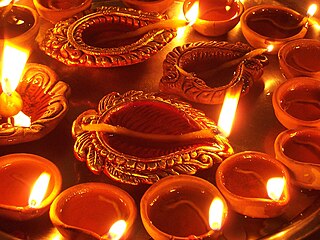
Worship in Hinduism is an act of religious devotion usually directed to one or more Hindu deities. A sense of Bhakti or devotional love is generally invoked. This term is probably a central one in Hinduism. A direct translation from the Sanskrit to English is problematic. Worship takes a multitude of forms depending on community groups, geography and language. There is a flavour of loving and being in love with whatever object or focus of devotion. Worship is not confined to any place of worship, it also incorporates personal reflection, art forms and group. Hindus usually perform worship in temples or at home to achieve some specific end or to integrate the body, the mind, spirit and also to live a pure life in order to help the performer reincarnate into a higher being.

Polali Rajarajeshwari Temple is a temple located in Polali, Dakshina Kannada district in Karnataka. The primary deity of the temple is Shri Rajarajeshwari. The temple was constructed in the 8th century AD by King Suratha and has been developed by many dynasties which ruled over the region. The idol of Shri Rajarajeshwari is completely moulded from clay with special medicinal properties. The temple portrays Hindu architecture with roofs adorned with wooden carvings of gods and copper plates. Daily and special poojas are conducted in the temple under the auspices of the head priest madhava bhat. Annual festivals are held in the temple with much fanfare. Polali Chendu festival is an important festive event where football is played to represent the fight of good over evil. The Chendu festival is followed by the annual festival in March, which lasts for a month and is attended by people from all over the world.

Tirunageswaram Naganathar Temple also known as Rahu Stalam is a Hindu temple dedicated to the deity Shiva, located in Tirunageswaram, a village in the outskirts of Kumbakonam, a town in Tamil Nadu, India. It is significant to the Hindu sect of Saivism as one of the temples associated with the nine planet elements, the Navagraha Stalas, and specifically Rahu. Shiva is worshiped as Naganathar, and is represented by the lingam. His consort Parvati is depicted as Piraisoodi Amman. The presiding deity is revered in the 7th century Tamil Saiva canonical work, the Tevaram, written by Tamil saint poets known as the nayanars and classified as Paadal Petra Sthalam.

The Fiji Sanatan Society of Alberta, also known as Vishnu Mandir in Edmonton, Alberta, Canada is a modern-style Hindu temple that was built by some of the very first Fijian Hindu immigrants in Edmonton in 1984. Hindus have been living in Canada for over a century, especially in Edmonton. Fijian Hindus began to settle in Edmonton in larger proportions starting in the 1960s and 1970s. They conducted prayers and meditated in individual households via groups they formed in the community. Talks of the need of a temple started in 1983 by four major Hindu Bhakti groups in Edmonton at the time, Shree Sanatan Dharam Ramayan Society, Edmonton Geeta Ramayan Congregation, Edmonton Vedic Congregation and later joined by Edmonton Prem Society, the group founded the Sanatan Board and raised funds to buy a property for the temple. It became the first Fijian Hindu cultural society in all of Canada, and till date is the largest. It started as a small place of worship in the Balwin residential area, constructed out of an old Church building. Since then it has been renovated 2 times, first adding a basement, then in 2006 expanded further making it the second largest Hindu temple in Edmonton.

The Balathandayuthapani Temple, officially the Arulmigu Balathandayuthapani Kovil, better known as the Waterfall Hill Temple or "Thaneer Malai" by locals, is a temple complex located in George Town, Penang. The main deity of this temple is Murugan. Visitors need to climb 513 stairs to reach the temple. It is the focal point of the Hindu festival of Thaipusam in Malaysia, after the Batu Caves. The hilltop temple, with its seven-storey 21.6m-tall gopuram, has been touted as the largest Lord Murugan temple outside India.

Over the millennia of its development Hinduism has adopted several iconic symbols, forming part of Hindu iconography, that are imbued with spiritual meaning based on either the scriptures or cultural traditions. The exact significance accorded to any of the icons varies with region, period and denomination of the followers. Over time some of the symbols, for instance the Swastika has come to have wider association while others like Aum are recognized as unique representations of Hinduism. Other aspects of Hindu iconography are covered by the terms murti, for icons and mudra for gestures and positions of the hands and body.

Kolanjiappar temple in Manavalanallur, a village in the outskirts of Virudhachalam in Cuddalore district in the South Indian state of Tamil Nadu, is dedicated to the Hindu god Murugan. Constructed in the Dravidian style of architecture, the temple is located in the Virudhachalam - Manavalanallur Road. The legend of the temple is associated with Saivite saint Sundarar and the Vriddhagiriswarar temple ad Virudhachalam.
